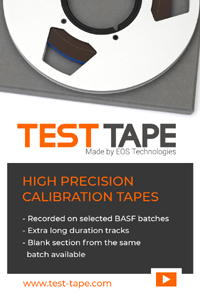Erläuterungen zu diesen 1948er US-AUDIO Seiten
Die hier stehenden amerikanischen Artikel aus 1948 (aus der US-AUDIO) sind teilweise sehr gewöhnungsbedürftig, weil sie erstens aus einer längst vergangenen Zeit stammen und zweitens, weil dort in den USA ganz "anders" gedacht wurde als bei uns in Old Germany oder in Europa.
Vergleichbar mit unseren deutschen Hifi-Magazinen etwa ab 1962 ist jedoch, daß auch diese Zeitschrift ihre Anzeigen- Kunden und -Leser (be- oder ab- ?) werben mußte.
Die Ausgaben der US-AUDIO von 1947 bis 1958 liegen in teilweise ganz miserablen PDF-Dateien vor, in denen die Reihenfolge der Seiten teils völlig wirr ist. Der Aufwande, einen einzigen Artikel komlett zusammenzubauen, ist daher erheblich. Die Fotos sind so gräuselig schlecht, daß sie nur in Ausnahmefällen eingebaut werden.
.
EDITOR'S REPORT - AUDIO Magazine 1948-01
AND NOW - VIDEO ENGINEERING
• THE big push is on. Television has clicked at last. Throughout the country, broadcast engineers are rushing to get TV on the air. The speed with which the demand for video equipment has built up has not only created shortages of apparatus but also of engineers with the know-how to install and operate the equipment. And it is gratifying to learn that the major networks, from their experience, have found audio engineers best able to handle the problems which arise in video engineering.
Early last fall we had detected this trend, and in the intervening months we have discussed the need for video engineering articles with members of our advisory board and other prominent audio engineers. The consensus was that AUDIO ENGINEERING could render a most welcome service to its readers by including authoritative, practical articles on video engineering as a portion of its text. To this end, we have arranged for contributions of this nature from some of the outstanding men in the video engineering field. As soon as these articles are ready, they will be promptly scheduled for publication in a department of this magazine.
Others of our readers who feel they have ideas which will be of interest and assistance to those confronted with video engineering problems are invited to write to us immediately.
ULTRASONIC MAGIC
• AT THE regular meeting of the New York chapter of the Institute of Radio Engineers on January 7th, S. Young White presented a most interesting talk on "Industrial Applications of High-Power Ultrasonics." The data for the lecture and the drawings for the illustrations used were taken from articles by Mr. White which have been appearing regularly in AUDIO ENGINEERING. We are happy that ours was the first magazine to publish any articles whatsoever on this new science. Our first article, in the May, 1947, issue of this magazine, attracted the attention of the editors of "Time magazine", and a very interesting article, dubbed "silent sound," followed, with full credit to our magazine. It was gratifying to learn that this story created more comment from readers of Time than any other article ever before published in their science section, so much, in fact, that the publisher of Time devoted his page in a subsequent issue to a discussion of the interest which the story had aroused.
More recently, "Life magazine" also featured a story on ultrasonics, showing many tricks, as well as industrial applications, which can be performed with this scientific tool. While so-called magic, as such, is inappropriate for detailed discussion in an engineering publication, it is amusing and interesting. At his lecture before the IRE, S. Young White described one such demonstration which was largely instrumental in kindling his interest in the new science. A small piece of carbon was placed in a glass of clear water, which was then subjected to an ultrasonic frequency of approximately 20,000 cycles. The ultrasonic energy caused the carbon to disintegrate almost instantly, changing the clear water to ink. Then, by simply in-creasing the ultrasonic frequency to approximately 200,000 cycles, the carbon was precipitated and again formed in a small piece, restoring the water to its former clarity.
What engineer worthy of the name wouldn't be fascinated by such a demonstration?
NEWS
• THE series of articles on sound engineering fundamentals by O.L. Angevine, Jr., Chief Sound Equipment Engineer for Stromberg-Carlson, which started in our December issue, will be continued in the February issue, and should appear regularly thereafter. We have moved up our publication date so that you will receive your magazine earlier in the month, and in the process, some articles intended for the January issue had to be held over, because all work on them had not been completed when the new deadline arrived.
J.H.Potts

